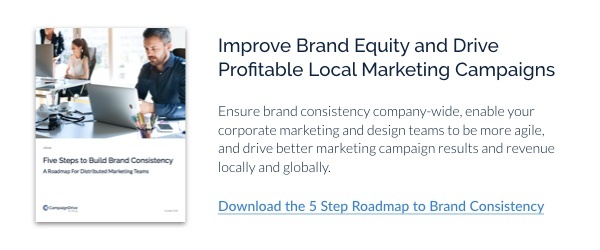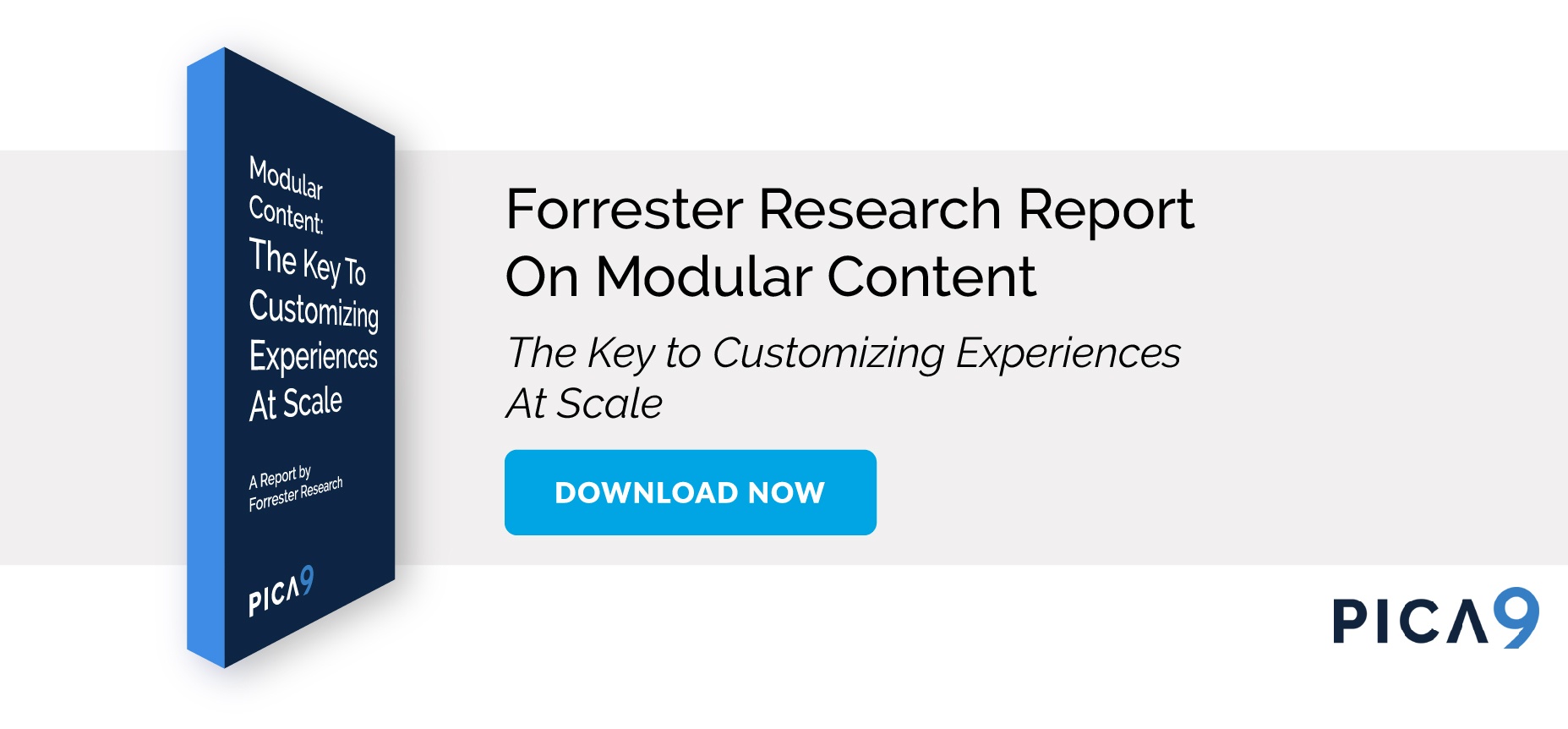If you’re involved with content creation, you’ve probably already heard the rising chorus of enthusiasm for modular content—that is, small content components that can be combined with each other in various ways to create unique experiences for customers.
What Is Modular Content?
Modular content is text or text/image combinations that are organized in relatively small units, with the express purpose of assembling different combinations of content-units, in different types of media (print, landing pages, social media, etc). Modular content can be viewed as a specific style of content management, which emphasizes content re-use, and the separation of text and images from details of layout-design. Modular content approaches first began to appear in the first generation of web content management systems, but now has grown to encompass the entire marketing mix and all media types, including video, text, images, and more.
The Advantages of a Modular Content Approach
Modular content has at least five really important advantages over the traditional, monolithic approach to content creation.
- Empowers local marketers to respond more effectively to customer needs. When local marketers assemble the right content modules for their prospects and customers, they end up creating more relevant and useful communications. This builds trust and empathy, and also helps prospects to deepen their knowledge and address critical questions and concerns in the buying process.
For example, a major hotel brand family equips salespeople worldwide with an e-proposal system that allows them to assemble just the right content components for a specific meeting planner’s upcoming event. Everything from menus to meeting spaces, to amenities can be tailored to the group’s size, demographics, and stated preferences. And this content, organized at the individual property level, can be updated centrally to ensure high quality and currency across thousands of proposals each month. - Minimizes errors and liability. Salespeople are often known (often unfairly) for playing a little bit fast and loose with the facts in pursuit of a sale. But the reality is that errors and omissions are often a sign not of devious intent, but of out of date content. By breaking critical content into small components and maintaining these in a centralized repositories, it’s much easier to ensure that the content that’s easiest for salespeople to retrieve and use, is also the most current and most stringently reviewed.
As an example, a major North American wealth management firm created a database of close to 100 separate certifications, with descriptive copy and legal disclaimers associated with each. Each of the firm’s more than 2000 financial advisors had access only to the certifications that they had earned—and when they incorporated those certifications into selling documents (pitch-books, resumes, etc.), the system ensured that the appropriate disclaimers were appended to footnotes. This systematic approach not only mitigated regulatory and legal risks that could easily have reached into the millions; it also shaved thousands of hours annually off the traditional legal review process. - Increases marketing agility and communication frequency. Research indicates that today’s buyers conduct more than 75% of the buying journey without ever engaging a salesperson. That means when contact does occur, the sales and marketing team has to be able to follow up faster and more efficiently than ever before. They need the right assets at their fingertips, they need the ability to assemble and collect that content in response to immediate needs, and they need to be able follow in a way that enhances and deepens the conversation, rather than slowing it down.
For example, one of the world’s largest tour operators empowered its travel agent community to pull together entire seminars on specific destinations, complete with direct mail and attendee materials tailored to the target destination. This allows the organization to respond to the ever-changing environments created by pandemic lockdowns, and to keep customers engaged with destinations that combined safety and consumer appeal. - Enhances brand consistency and integrity. In survey after survey, salespeople and franchisees affirm the importance of their brands. Despite this commitment, brand managers continue to play whack-a-mole with off-brand executions that erode brand consistency? A big part of the disconnect is that local marketers, who often lack formal training in branding design, aren’t aware that they are violating guidelines. A modular approach to content can nip this problem in the bud, by separating content from design. This means that when users assemble content, the brand rules are automatically applied to their selected text and images—so there’s no room for off-brand executions.
For example, a global provider of enterprise software built a web-enabled collateral system that automatically enforced typography, colors, and photo placement and handling—salespeople simply selected the product, the audience, and the geography, and the resulting document was guaranteed to be in-compliant with brand guidelines.
- Slashes creative-production costs by simplifying document assembly and promoting the reuse of proven content. Modular content systems have been proven to dramatically reduce the number and complexity of one-off design requests that local marketers make of their in-house creative production teams and external agencies. The greater efficiency of a well managed modular content system results in thousands of hours of manual labor shaved off the budget. But even more important, it gives creative leaders the opportunity to concentrate on issues of strategy, creativity, and competitive advantage—rather than getting bogged down in the minutiae of last minute, local-market executions.
For example, a major chain of fast-food restaurants empowered local operators with more than 2,000 brand controlled templates, and as a result was able to push out more than 10,000 customized local executions per month—with no increase in the headquarters-based restaurant support staff.
Challenges on the Road to Modular Content
Given all these advantages, you might wonder why less than half the major brands in a recent survey indicated that they had begun to “componentize” their marketing content.
Content Architecture
Building modular content means thinking through a content architecture that can apply across all the different media types you use today, and the countless more that you’ll be using in the future.
For each piece of content that you create, you need to determine its intended audience/personas, and to store the content with this audience and purpose clearly defined. You’ll also need to set some standards with regard to voice, vocabulary, and length, so that content blocks will flow naturally when assembled into combinations that you may not have envisioned at the time of first creation.
And to enforce these guidelines, you’ll want to layout some standard processes for content review and updating—to ensure that both the accuracy of the content and tone and tenor of the copy support your brand objectives.
Content Governance
A second consideration are the rules governing accessibility of content blocks. This can start with something as simple as basic permissions on a regional basis. But content curation can grow much more advanced as time goes by. In general, what you’re aiming for is to ensure that users are presented with content that’s relevant to their needs and is easy to find, while at the same time, suppressing content that’s inappropriate for them to use.
Content Maintenance
Content, like code, has to be maintained. And the problem with a modular approach to content is that many organizations have not yet begun to assign clearcut responsibilities for content maintenance. A job that belongs to everybody effectively belongs to nobody. That’s why it’s critical to create a content maintenance program right from the beginning—and devote the resources to actually implement that program as designed.
Conclusion: Modular Content is Still in its Early Days.
If you’re just embarking on the journey to modular content, take a look at this Forrester Report, “Modular Content Is the Key to Customizing Experiences At Scale”.


